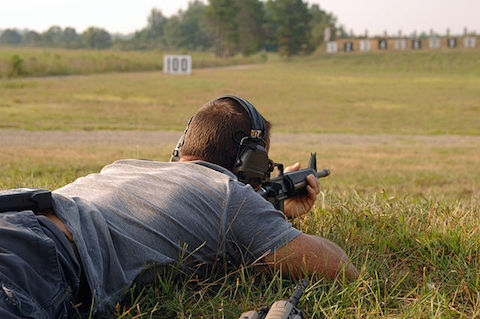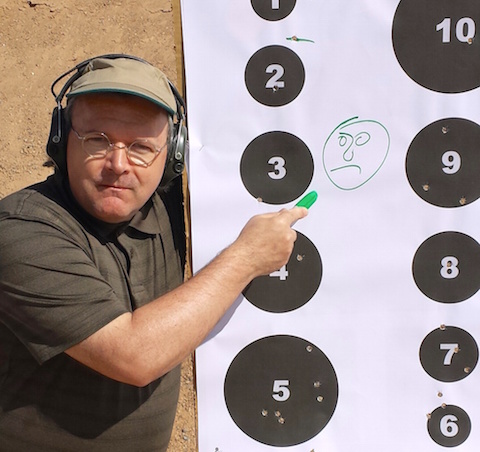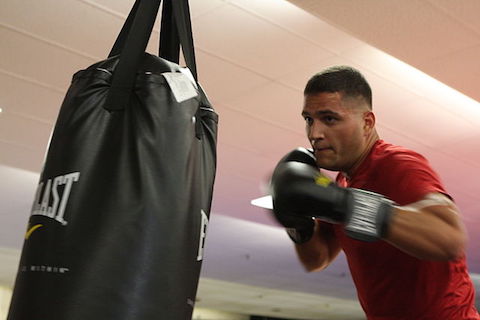
Is the prone position useful in defensive shooting? I don’t think so, and here’s why.
It happened again just the other day: someone asked me about my Perimeter Defense Rifle class and was surprised when I told him that I didn’t teach the prone position.
He seemed both offended and perplexed (which is an interesting combination of emotional states, I’ll admit.) He simply couldn’t fathom that someone teaching a rifle class wouldn’t teach his students to shoot from the prone position. That is, after all, the most stable rifle shooting position, isn’t it? They teach it in the Marine Corps so it must be important — right?
No, not really. Before I delve into the “why” of that statement, however, let me recap what Perimeter Defense Rifle is all about.
Most rifle classes you can find today fall into three camps: hunting; long range precision; or close-quarters battle (CQB — using a rifle at room distances, especially IN the room.) Of those, only the CQB type classes are really usable in terms of defending yourself and your loved ones with a rifle.
Anyone who lives outside of the typical suburban 5,000 square foot lot, however, will quickly realize that there’s a huge middle ground which needs to be covered: using your rifle in a defensive capacity between about 25 feet and 100 yards (or thereabouts.) That’s the area where the rifle really comes into its own, being able to take advantage of its ability to deliver great amounts of power into precise areas at a distance.
This is the realm where you might plausibly need to use your rifle for a threat coming down your driveway (been there), or the marauding predator intent on killing your pets or livestock (done that.) It’s the range in which you might need to deal with armed trespassers (done that too) or rabid animals (done that more than once.) You might also be in a disadvantaged position when you’re under a lethal attack and the rifle is the only way to really reach your attacker (done that and really don’t want to do it again.)
When I speak of Perimeter Defense, then, I’m talking about being able to deter an attack before it gets into that range we normally think of as being more suitable to a handgun; it’s the range where the rifle really comes into its own as a defensive tool. Perimeter Defense, because it happens at what we think of as extended distances, is where the rifle can really make use of its ability to project force at a distance.
Back to our curious emailer: why, if I’m teaching using the rifle at longer distances, don’t I teach and emphasize the prone shooting position? It’s the most stable and therefore the position capable of delivering bullets to the greatest amount of precision, so why don’t I think it’s worthy to teach?
The answer is simple: you need to pay attention to the context of use.
What I mean by that is the use or utility of any defensive tool is depending on the environment (conditions) in which it’s used. In the real world, the only instances where a prone position is really useful is a) when you’ve got the time to get into it and adjust your body positioning to get to a natural point of aim (NPA) and b) the terrain is such that nothing gets between you and your target (things like grass or molehills, for instance — not to mention the earth itself.)
In my world I don’t see a lot of circumstances where either, let alone both, are the case. In fact I’ve never seen a “field position” where prone was even possible; at my house, for instance, the ground isn’t completely level (it’s really not even close to being level!) There is no direction and no place on my property to be able to even see my target if I drop to ground level. I’ve even been on nice, flat shooting ranges that desperately needed to be mowed where the tall grass obscured my target (and would likely have affected the trajectory of my bullet!)
The only time a prone position is useful is on a nicely manicured lawn or an elevated (relative to the target) position. Outside of those it has little to no use.
If I were to spend my time teaching the prone position it would mean that I’d need to take time away from other, more important and useful, skill development. Bowing to pressure to teach something with little defensive utility in a defensive rifle class would mean that I prize tradition over utility. I’m big on traditions, mind you, in their right place; defensive shooting is not usually that place.
There are lots of instructors you can go to learn the prone position, and if you’re a competitive rifle shooter you certainly need to be familiar with it. For Perimeter Defense, however, I’ll stick with shooting positions that are better suited to the job!
-=[ Grant Cunningham ]=-
- Posted by Grant Cunningham
- On March 2, 2015




